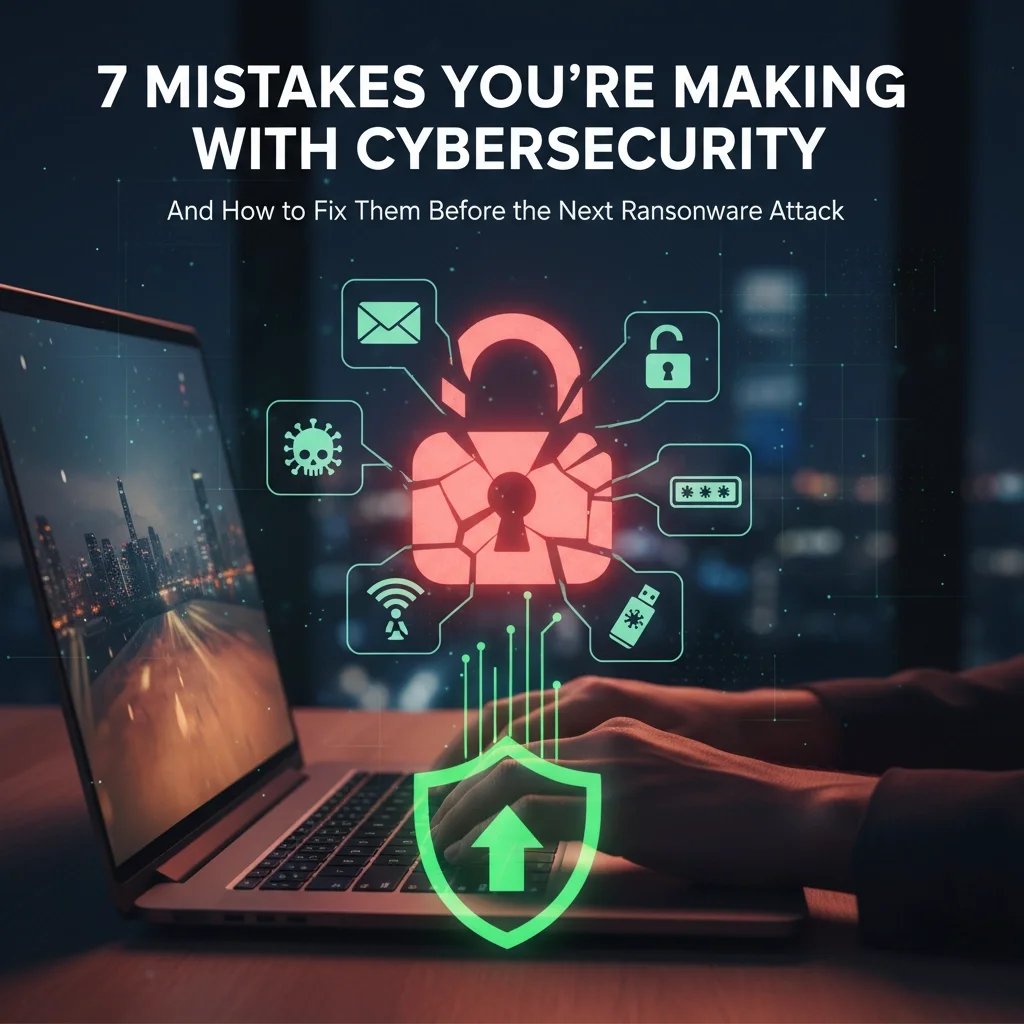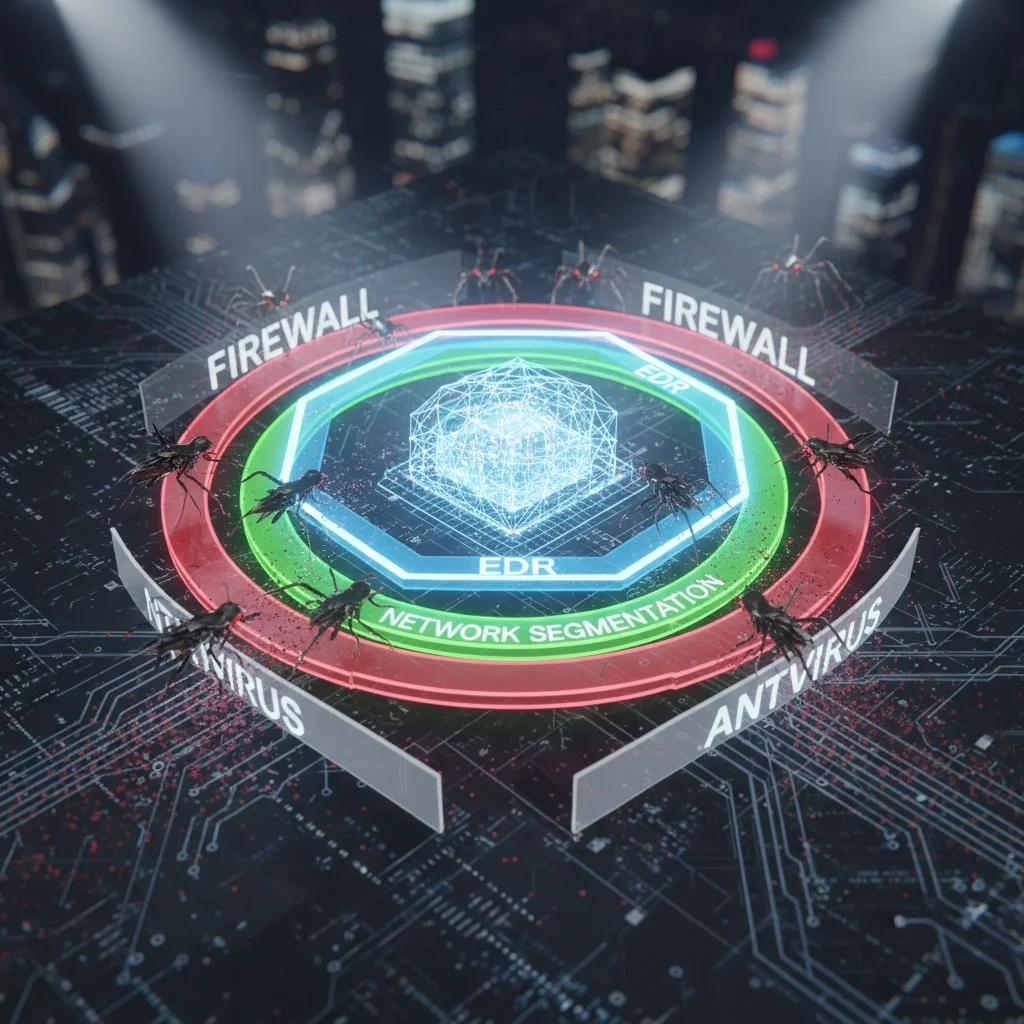7 Mistakes You're Making with Cybersecurity (and How to Fix Them Before the Next Ransomware Attack)
Cybersecurity threats are evolving faster than ever, and ransomware attacks continue to cripple businesses of all sizes. In 2025, the average cost of a data breach has reached $4.88 million, with ransomware attacks accounting for nearly 30% of all security incidents. Yet many organizations continue making the same critical mistakes that leave them vulnerable to these devastating attacks.
At TekkEez, we've seen firsthand how these seemingly small oversights can lead to catastrophic consequences. The good news? Most of these mistakes are entirely preventable with the right approach and proactive measures.
Mistake #1: Neglecting Software Updates and Patches
The Problem: Unpatched software creates open doorways for cybercriminals. Attackers actively scan the internet for outdated systems, exploiting known vulnerabilities before organizations can apply fixes. Even with robust antivirus programs, security holes in popular software can compromise your entire network.
The Fix:
• Establish automated patch management - Set up automatic updates for operating systems and critical applications
• Prioritize critical patches - Focus on patches for internet-facing systems and frequently targeted software
• Create a patch testing protocol - Test updates in a controlled environment before deploying company-wide
• Maintain an inventory - Keep detailed records of all software and systems requiring regular updates
Why This Matters: Cybercriminals often exploit vulnerabilities within hours of their discovery. Organizations with consistent patch management reduce their attack surface by up to 85%.
Mistake #2: Weak Password Practices and Missing Multi-Factor Authentication
The Problem: In 2025, passwords alone are insufficient protection. With billions of stolen credentials circulating on the dark web, hackers can gain access to your systems without breaking a sweat. Weak, reused, or easily guessable passwords remain one of the most common entry points for ransomware attacks.
The Fix:
• Implement Multi-Factor Authentication (MFA) - Require at least two forms of verification for all critical systems
• Enforce strong password policies - Mandate complex passwords with regular updates
• Deploy password managers - Provide enterprise-grade password management tools for all employees
• Monitor for credential breaches - Use dark web monitoring services to detect compromised credentials
Why This Matters: MFA blocks 99.9% of automated attacks, even when passwords are compromised. It's the single most effective security control you can implement today.
Mistake #3: Inadequate Employee Security Training
The Problem: Human error causes up to 95% of successful cyberattacks. Despite feeling confident about their cybersecurity knowledge, 60% of employees fall victim to AI-generated phishing attacks. Many organizations conduct annual training sessions, then assume their teams are prepared for the sophisticated social engineering tactics used in modern ransomware campaigns.
The Fix:
• Implement ongoing phishing simulations - Conduct realistic, regular testing that adapts to current threat trends
• Provide dynamic security training - Move beyond annual presentations to continuous, interactive education
• Focus on real-world scenarios - Train employees on the latest tactics, including AI-generated phishing attempts
• Create a security-conscious culture - Reward reporting of suspicious activities and near-misses
Why This Matters: Organizations with comprehensive security awareness programs experience 70% fewer successful attacks than those relying on basic training methods.
Mistake #4: No Reliable Data Backup Strategy
The Problem: Ransomware works by encrypting and blocking access to critical business data. Without current, tested backups stored safely offline, organizations face an impossible choice: pay the ransom or lose everything. Many businesses discover their backup systems have failed only when they need them most.
The Fix:
• Follow the 3-2-1 backup rule - Three copies of data, two different media types, one stored offsite
• Test backups regularly - Verify data integrity and practice restoration procedures monthly
• Implement immutable backups - Use backup solutions that prevent ransomware from encrypting stored data
• Maintain offline copies - Store critical backups completely disconnected from your network
Why This Matters: Organizations with robust backup strategies recover from ransomware attacks 3x faster and are 60% less likely to pay ransoms.
Mistake #5: Over-Reliance on Traditional Antivirus Software
The Problem: Many organizations depend solely on signature-based antivirus software as their primary defense mechanism. While antivirus remains important, it's insufficient against modern threats that use zero-day exploits, fileless attacks, and sophisticated evasion techniques commonly deployed in ransomware campaigns.
The Fix:
• Deploy endpoint detection and response (EDR) - Implement advanced threat detection that monitors behavior patterns
• Use next-generation firewalls - Move beyond basic packet filtering to application-aware protection
• Implement network segmentation - Isolate critical systems to limit attack spread
• Add threat intelligence feeds - Enhance detection with real-time threat data and indicators of compromise
Why This Matters: Organizations using layered security approaches experience 50% fewer successful breaches compared to those relying on single-point solutions.
Mistake #6: Poor Network Security Configuration
The Problem: Many businesses use consumer-grade networking equipment and default security settings that lack the protective features necessary for business environments. Default DNS settings, unmonitored network traffic, and improperly configured firewalls create multiple entry points for ransomware attacks.
The Fix:
• Upgrade to enterprise-grade equipment - Invest in business-class routers, switches, and security appliances
• Implement DNS filtering - Block access to known malicious domains and command-and-control servers
• Configure proper port security - Secure or disable commonly exploited ports like RDP (3389) and SMB (445)
• Enable comprehensive logging - Monitor and analyze network traffic for suspicious patterns
Why This Matters: Proper network security configuration can prevent up to 80% of common attack vectors used in ransomware deployment.
Mistake #7: Lack of Incident Response Planning
The Problem: Without a well-defined incident response plan, organizations cannot respond quickly and effectively when ransomware strikes. Poor preparation leads to extended downtime, higher recovery costs, and increased likelihood of paying ransoms. Many businesses only start thinking about incident response after an attack has already begun.
The Fix:
• Develop a comprehensive incident response plan - Create detailed procedures for detection, containment, and recovery
• Establish a dedicated response team - Assign specific roles and responsibilities before an incident occurs
• Conduct regular tabletop exercises - Practice your response procedures through simulated attack scenarios
• Partner with cybersecurity experts - Identify and contract with incident response specialists before you need them
Why This Matters: Organizations with tested incident response plans recover from attacks 200+ days faster than those without formal procedures.
Taking Action: Your Next Steps
These seven mistakes represent the most critical vulnerabilities we see in businesses today. The reality is that ransomware isn't a matter of "if" but "when" for most organizations. However, by addressing these common mistakes proactively, you can dramatically reduce your risk and minimize damage if an attack occurs.
Ready to strengthen your cybersecurity defenses? TekkEez provides comprehensive cybersecurity consulting and IT support services designed to protect your business from ransomware and other advanced threats. Our expert team can assess your current security posture, identify vulnerabilities, and implement the robust protections your business needs.
Don't wait for the next attack to expose these critical gaps in your security. Contact TekkEez today to schedule a comprehensive cybersecurity assessment and take the first step toward bulletproof protection for your business.
Your data, your reputation, and your business continuity depend on getting cybersecurity right. Let us help you build the defenses that keep ransomware at bay.




